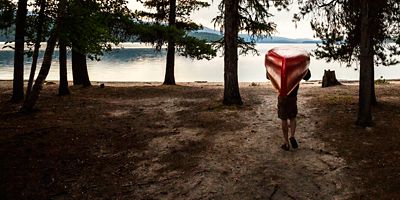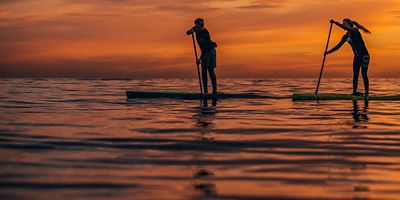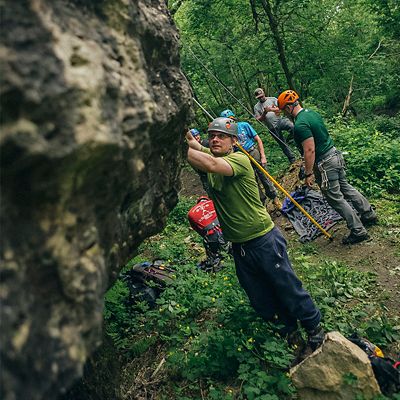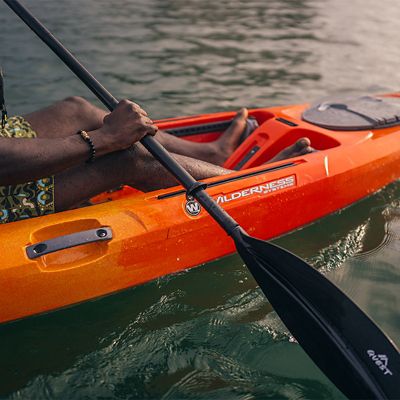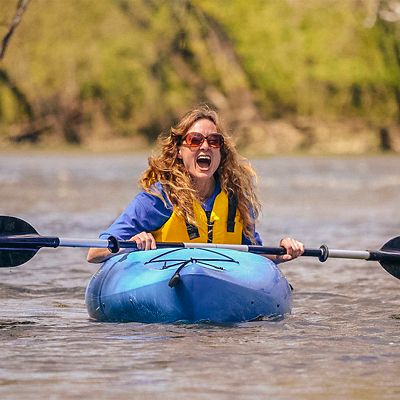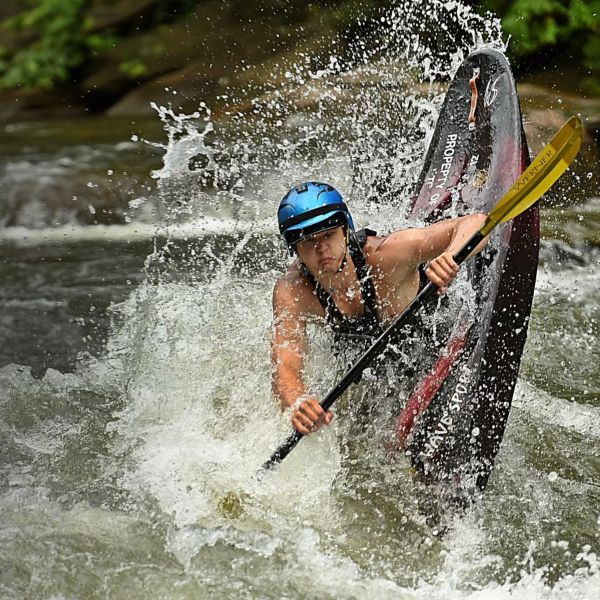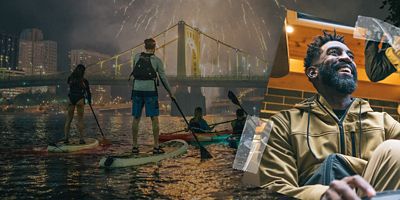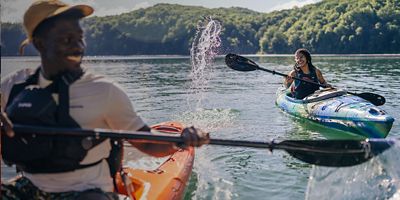Whether you’re going out for a day or a week, kayaking unlocks a whole new world of adventure. There are two main categories of kayaks when it comes to flatwater paddling (as opposed to whitewater): touring kayaks and recreational kayaks. Below we’ll help you determine which type of boat is right for you, and how to get started.
Touring Kayaks
This type of craft, also known as a sea kayak, is ideal for paddling on flatwater rivers, large lakes, bays, and oceans.
- Touring kayaks are long and narrow compared to other types of kayaks.
- This design improves speed and tracking (staying straight). It reduces primary stability, making touring kayaks a little wobbly when not moving, compared to wider, recreational models.
- Internal compartments store gear; large boats can easily stow a week’s worth of camping gear and supplies. Bulkheads divide the kayak into separate compartments and waterproof hatches allow access.
- Bungee cords on the decking let you keep things like maps, water bottles, and snacks within easy reach.
- Many touring kayaks have a “closed deck” design. With these, you sit inside a cockpit and a spray skirt seals around your waist. The neoprene seals your lower torso and legs inside the boat where they stay dry. It also lets skilled tourers ”roll” their kayaks to right themselves should they capsize. Kayaks without a cockpit are called “sit-on-tops” and are easier to use for beginners, but can’t be rolled.
- Touring kayaks usually have either a rudder or skeg, which help you maintain direction in open water.
Recreational Kayaks
These boats are best for trips of up to one day on flatwater rivers and lakes.
- Recreational kayaks are shorter and wider than touring kayaks (they’re generally less than 12 feet long).
- This design improves stability, which is great for beginners, but makes them a little slower than their touring cousins.
- Recreational kayaks are often “sit-on-top” designs that favor comfort and ease of getting in and out, but can’t be sealed at the waist like a closed deck kayak.
- Expect limited storage with a recreational kayak. These boats might have bungee cords and a small compartment for carrying lunch and a few layers, but they can’t transport camping gear like a touring kayak.
Pick an appropriate spot
When you’re just starting out, choose a spot where you will be comfortable. Look for calm water with easy places to get in and out of your kayak (avoid strong currents, waves, and wind). Until you know how to perform a self-rescue in open water, never paddle far from shore; you should be able to comfortably swim to safety.
Before you go: Let people know where you are going and when to expect you back (and who to call if you don’t return on time). Check the weather and current conditions, and make sure you get any required permits. Always paddle with another person so that you can help each other should anything go wrong.







